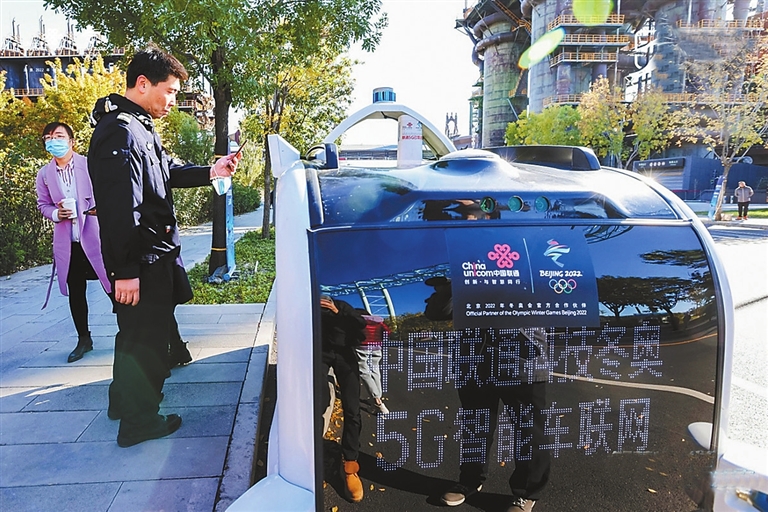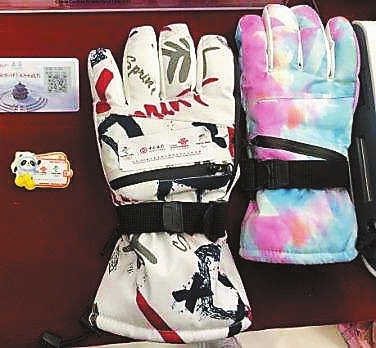

In less than 45 days, the world’s premier international sporting event will return to Beijing. Technological elements are expected to play an outstanding role in the upcoming Beijing 2022 Olympic and Paralympic Winter Games. Below are just a few of the technological innovations expected at Beijing 2022. Green ice-making Beijing will use carbon dioxide in ice-making procedures. Not using ozone layer-harming Freon as a refrigerant in ice making is expected to help reduce carbon emissions equivalent to that of 3,900 cars per year, and cut emissions from the activity to nearly zero. The new ice-making technology can precisely control ice temperature and will be helpful to ensure standardized hardness of ice surfaces. It will also significantly save electricity during ice making. Full 5G coverage All of the stadiums, venues and roads that connect different facilities of the Games are covered by 5G networks, which will provide better telecommunication support for broadcasting and online healthcare services. Meanwhile, the highway and high-speed railway linking Beijing and Zhangjiakou, the co-host city in Hebei Province, have also achieved full 5G coverage. The high-speed rail link between cities is equipped with wireless charging. Hi-tech broadcasting During the Games, a cloud broadcast platform will enable journalists to interview athletes contactless through audio and video systems, edit, distribute and store all materials remotely on the cloud and livestream events with their program directors back in their own countries. For audiences, they will be able to watch competitions online from different angles based on their own preferences, which adds to the fun of watching. As part of its overall services, China Unicom said its robust telecom infrastructure will also enable ultra-HD 4K to 8K video transmission, along with virtual reality and augmented reality live broadcasts of the competitions. An advanced weather forecast system can capture high-resolution images, and update accurate data of snow temperatures, wind direction, wind speed and other metrics every 10 minutes. Smart retail minibuses Simply by waving their hands, buyers can summon a 5G-enabled, driverless minibus outfitted as a mobile retail store to stop in front of them. Consumers could push a virtual button on the vehicle’s screen to buy more than 20 items such as water or souvenirs. When the minibus is not around, buyers can place an order on their smartphones and then the vehicle will move to them. Behind this smart retail minibus is an intelligent networking system developed by China Unicom. The networking system covers 1 million square meters of Shougang Industrial Park, where several events of the Winter Olympics will take place. Thanks to integration of 5G technologies and the BeiDou Navigation Satellite System, the unmanned vehicles are able to achieve continuous, high-precision positioning within 10 centimeters. Smart ski gloves Bank of China has designed ski gloves that contain digital yuan chip hardware to support digital payments. During the Games, athletes can wear the ski gloves and tap screens on vending machines to pay for certain items without the need to remove gloves, thus obviating the need to use mobile phones. Payment wallets will be integrated within the chips and sensors will be activated to make payments. In addition, automatic charging posts for electric vehicles that support digital yuan payments are expected to be put into use at all venues for the Games. The charging posts are equipped with digital yuan billing systems and can calculate rates and charge automatically. Robots A large number of robots will provide support during the Games. A logistics robot can carry up to 300 kilograms of goods and perform contactless distribution at the venue. An intelligent path-finding robot can move freely, avoid obstacles, and automatically recharge itself. The most important goal is to reduce direct contact between people. And there are robots that can grind coffee beans and place the resulting grounds in a percolator to brew a cup of coffee in only four minutes. Air purifiers Shenzhen Kangfeng Air Purification Technology Co.’s large mobile air purifiers use AOP-KF solid alkali as a filter, which can actively capture and eliminate bacteria in the air by releasing hydroxyl-free radicals, ensuring that large closed venues have clean air all the time. The purifiers have already been used in the 130th Canton Fair. (SD-Agencies) | 
